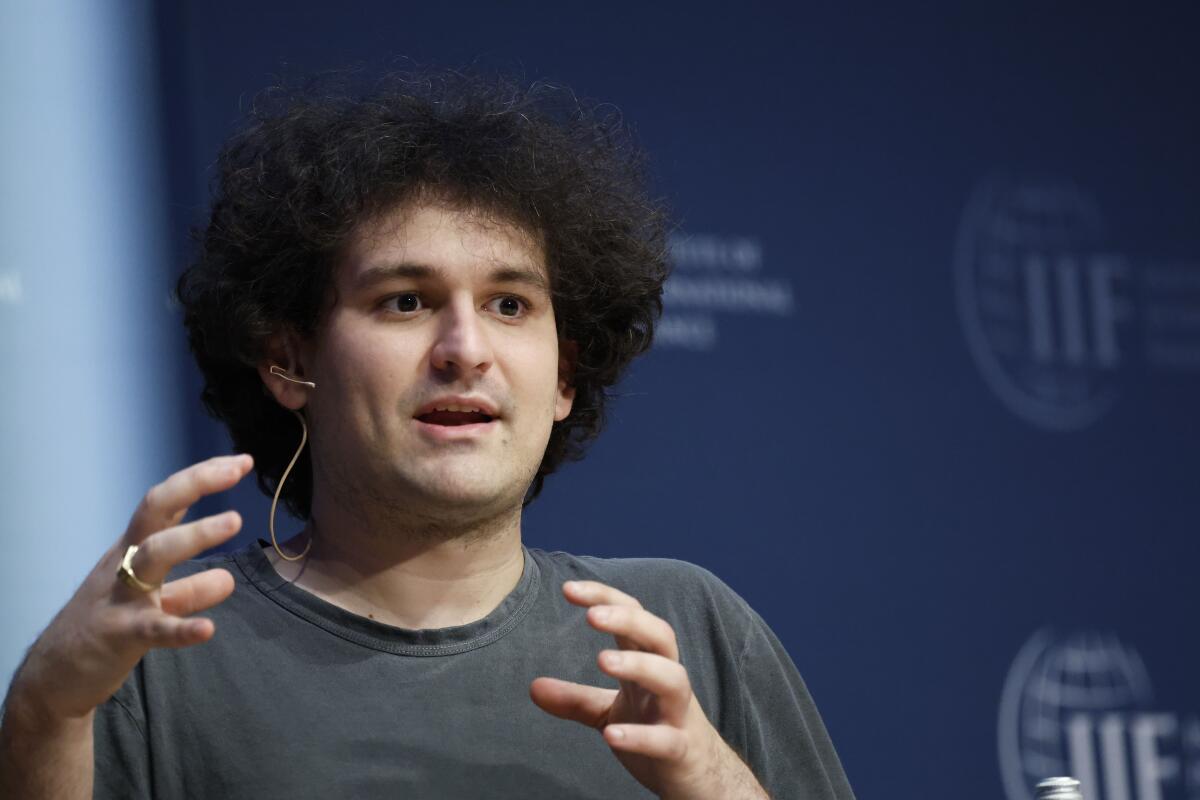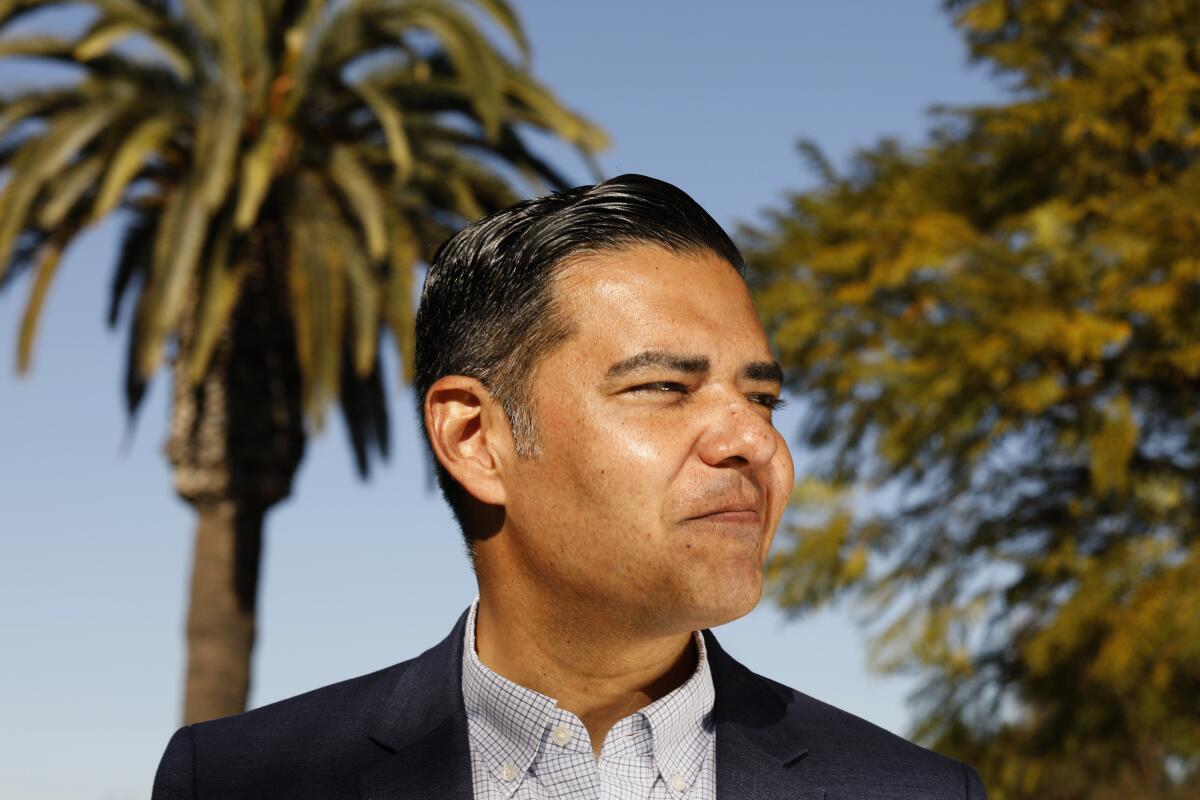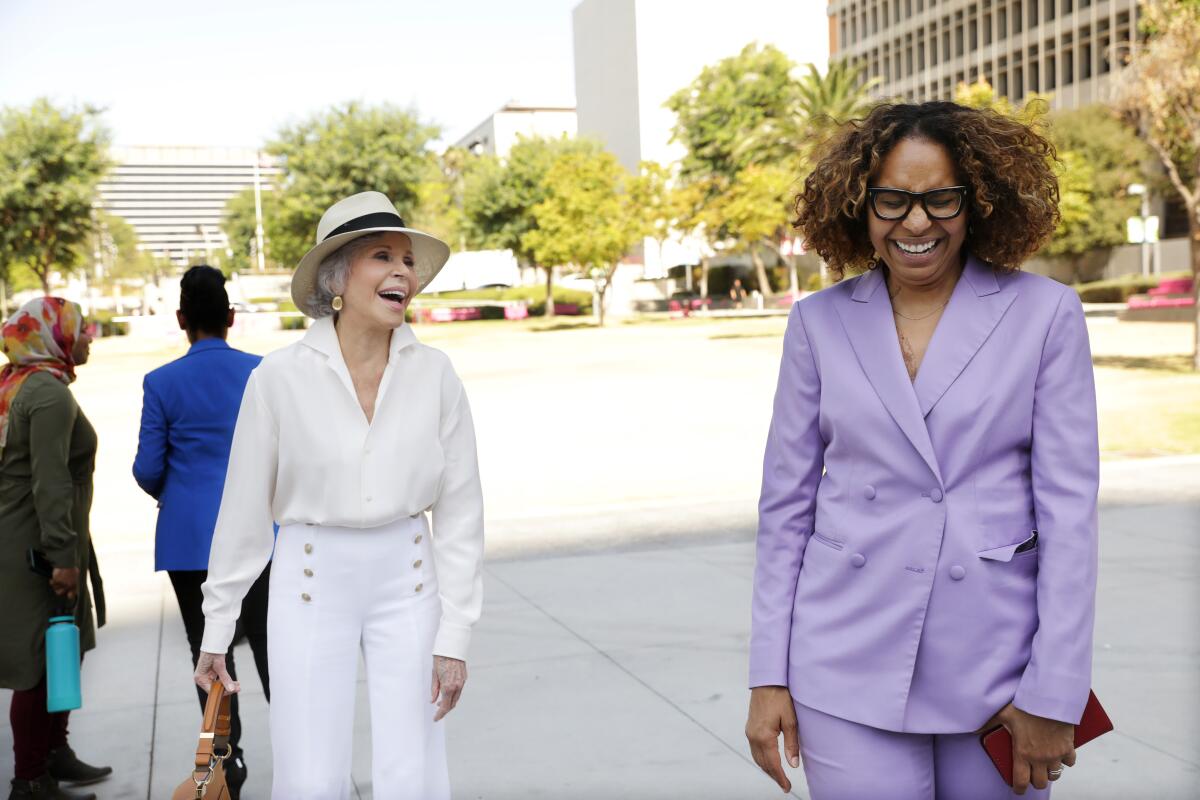Disgraced crypto exec Sam Bankman-Fried spent big in two SoCal Congress races

During her campaign for the U.S. House of Representatives this spring, then-state Sen. Sydney Kamlager was endorsed by a little-known nonprofit called Guarding Against Pandemics.
A few weeks later, a group called Protect Our Future began to spend heavily to support Kamlager in her primary election in South Los Angeles, dropping $500,000 in less than a month on mailers, television ads and radio spots, federal records show.
The two events had one connecting thread: San Francisco Bay Area native Sam Bankman-Fried, 30, the co-founder of the cryptocurrency exchange FTX.
Before his business empire imploded, Bankman-Fried was the world’s youngest billionaire and the second-biggest donor to Democrats in the 2022 midterm elections. He gave $27 million to the Protect Our Future political action committee and also contributed to the Guarding Against Pandemics group, run by his younger brother.
In more than a dozen congressional elections, including two in California, the two groups seemed to have overlapping interests: Guarding Against Pandemics endorsed a House candidate, and Protect Our Future spent heavily to support the political hopeful.
In addition to Kamlager’s bid for the 37th Congressional District, Protect Our Future spent more than $1 million to support Long Beach Mayor Robert Garcia in the 42nd District in southeastern L.A. County.
Kamlager and Garcia both won election by a wide margin.
Groups connected to Bankman-Fried spent about $2.4 million in the two races, raising questions about how the Bahamas-based billionaire zeroed in on Kamlager and Garcia, and whether he wanted them to support his plan for crypto regulation in Washington.
The vast majority of Bankman-Fried’s contributions were funneled through political action committees, which are barred under federal law from coordinating with candidates. Still, some Democrats have tried to distance themselves from Bankman-Fried, wary of the optics of being backed by a mega-donor whose FTX customers may have lost everything.
“I was definitely surprised by the amount of spending,” Kamlager said in an interview. She said she didn’t know why Bankman-Fried’s group had backed her, or whether a crypto bill she introduced in Sacramento in February had been a factor.
Garcia’s representatives did not respond to requests for comment.
The central mystery of Bankman-Fried’s political giving is whether the crypto executive had an ulterior motive in backing congressional candidates. Bankman-Fried, who did not return a request for comment, has previously said that “most” — but not all — of his contributions were “for pandemic prevention,” and were not made “with crypto in mind.”
Bankman-Fried had been lobbying for crypto markets to be regulated by the Commodity Futures Trading Commission rather than the Securities and Exchange Commission, which has a bigger budget and a more aggressive stance on crypto interests. Bankman-Fried told The Times this summer that he was “spending a lot of time” talking to members of Congress.

Bankman-Fried made a $2-million contribution to a committee called GMI, which then transferred funds to a pro-crypto committee called Web3 Forward, according to federal records. Web3 Forward spent more than $440,000 to support Kamlager and more than $231,000 to oppose state Assemblymember Cristina Garcia (D-Bell Gardens), who ran against Robert Garcia in the primary, according to federal filings.
Bankman-Fried also contributed $250,000 to the Democratic Majority For Israel, federal filings show. The committee reported more than $88,000 in outside expenditures to support Kamlager and nearly $143,000 to oppose Democrat Daniel Lee, who came in third in the primary. In Long Beach, DMFI spent nearly $66,000 to oppose Cristina Garcia.
There are no limits on what such outside groups can spend to support or oppose candidates, and such spending has the potential to reshape races without input from candidates.
In an email, the Protect Our Future committee described Kamlager and Garcia as “champions for pandemic prevention in the next Congress.”
Protect Our Future credited Kamlager’s work to keep small businesses afloat during COVID-19 and praised Garcia’s proactive handling of city issues during the pandemic. Pandemic preparedness received top billing on Garcia’s campaign website, above voting rights and a nationwide $15 minimum wage.
Protect Our Future was the single largest spender in Garcia’s race, producing an avalanche of advertisements, including videos on Facebook and Instagram that described him as “the best of America.” The ad said he would “fight to give every family a shot, from strengthening Medicare and Social Security to making investments we need to prevent pandemics.”
Garcia has not taken any public positions on crypto.

Kamlager said she filled out a Google survey for Guarding Against Pandemics, then sat for a Zoom endorsement interview. The questionnaire, reviewed by The Times, had six yes-or-no questions about pandemic preparedness.
Kamlager said she didn’t know that Guarding Against Pandemics had a connection to Bankman-Fried. Neither she nor her team had spoken to him, she said.
“I wouldn’t know the person if he walked up and sold me a Snickers bar,” Kamlager said.
In February, Kamlager introduced a bill in Sacramento that would have allowed state agencies to accept cryptocurrency as a form of payment. The bill, SB 1275, received coverage on financial news websites such as Blockworks and Motley Fool.
Kamlager’s office said the change would make California more “user-friendly.”
State Controller Betty Yee opposed it, writing in a legislative analysis that venturing into digital payments would be “fiscally irresponsible.” A legislative analyst said crypto could be used in tax evasion and money laundering and is not backed by the Federal Deposit Insurance Corp.
When the bill died in committee, Kamlager said on Twitter that there would be “another bite at the crypto apple.”
Kamlager’s campaign also drew support from the pro-crypto political action committee Dao for America, which spent more than $151,000 on her behalf, filings show.
Kamlager said she had been intrigued by the idea that digital currencies could help people of color build wealth, especially for those who had been shut out of traditional financial institutions.
But, Kamlager said, the collapse of FTX “revealed a lot of things.” Asked if she planned to introduce any crypto bills in Congress, Kamlager said: “Probably not right now.” She said her priorities will be criminal justice, housing and generational wealth.
“It’s important for folks to know that just because someone supports you doesn’t mean that you support them,” she said.
More to Read
Sign up for Essential California
The most important California stories and recommendations in your inbox every morning.
You may occasionally receive promotional content from the Los Angeles Times.










